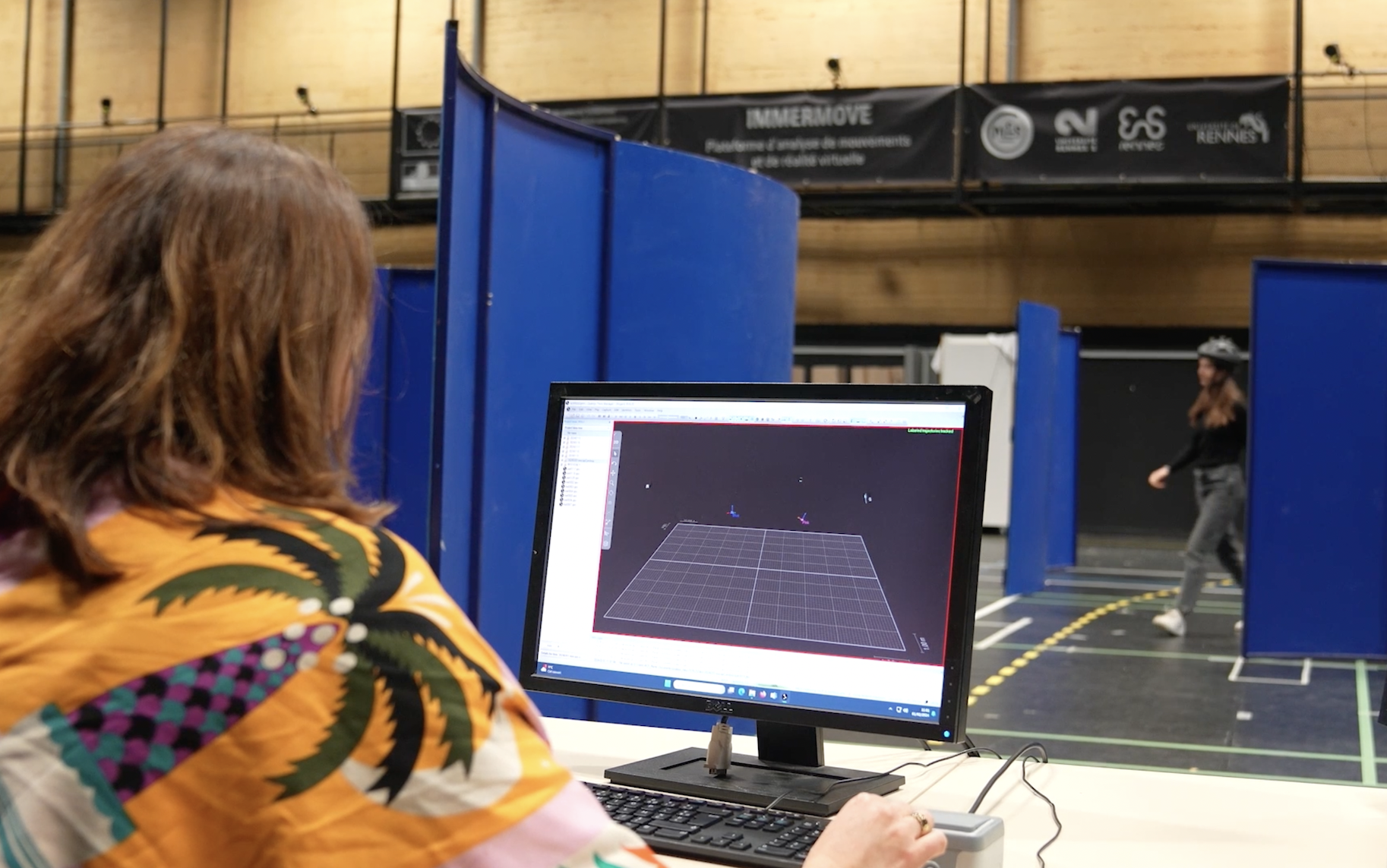
Adaptation to movement, a relevant assessment criterion
After a concussion, an athlete follows a progressive recovery procedure that includes the disappearance of clinical symptoms and a return to normal cognitive and balance functions. However, numerous studies show that there is a discrepancy between the clinical symptoms (the symptoms assessed by the doctor and easily measurable), which enable the decision to be taken about the athlete's return to play, and the functional physiological symptoms (the brain's internal functions, in particular the mechanisms of perception and action), which will persist even though the players are already back on the pitch. At the same time, statistics show that a player who has already suffered a concussion is more likely to suffer another one or to have musculoskeletal problems during the match.
Anne-Hélène Olivier's work is based on this observation. A lecturer at the STAPS department of Rennes 2 University and a researcher in the M2S laboratory and the VirtUs team at Inria, she is working on concussion detection in rugby players based on analyses of pedestrian avoidance behaviour, i.e. the way in which we produce a trajectory adapted to our environment, whether when walking or in sporting situations. The aim is to understand what visual cues a person will pick up about the movement of another person, under what conditions they will adapt their trajectory to produce a movement appropriate to the situation, and what movement adaptations are made.
"We have done a lot of work on young, healthy populations, and this paradigm has enabled us to highlight laws of movement, invariants in decision making and action. We are now using this paradigm with specific populations, whether to understand the effects of advancing age on the way people move around in an environment, or to study sporting populations, in particular rugby players who have suffered concussion", explains Anne-Hélène Olivier.
To do this, the VirtUs project team put two people in a gymnasium, equipped with bicycle helmets fitted with sensors to measure their position and relative movements. The experiments confirmed a difference in adaptation to their environment between players who had suffered concussion in the previous six months, with more risky or inappropriate decision-making when crossing paths, and players who had not suffered concussion.
Towards more accurate results with virtual reality and AI
These results prompted the project team to take its work on the subject one step further, gradually turning to virtual reality tests for greater precision. Instead of interacting with a real player, the athlete will face a virtual human whose movement will be perfectly controlled and infinitely reproducible.
Verbatim
Our aim is to be able to monitor concussed athletes under standardised conditions over the long term. In other words, to be able to take measurements under the same conditions over and over again, to see if there is any change. In the real world, in the laboratory, this is very complex, if not impossible to do.
While the researchers are currently concentrating on the simple task of two walkers passing each other, they plan to develop their models into more complex situations. More dynamic tasks, such as running, are envisaged, with much more time pressure: "Virtual reality already allows us to add double tasks, for example, which can enable us to make situations more complex. The arrival of artificial intelligence will then enable us to reconstruct game situations", explains the scientist.
Ultimately, the aim of the work being carried out by Anne-Hélène Olivier is to complement a medical diagnosis, to be able to provide clues and additional biomarkers to guide the doctor's decision on the right date to return to play and, above all, to contribute to the scientific community's understanding of the symptoms of concussion. "We can see that it's multi-factorial and multi-variable, so we need to work together with all those involved in this field to make progress," she concludes.